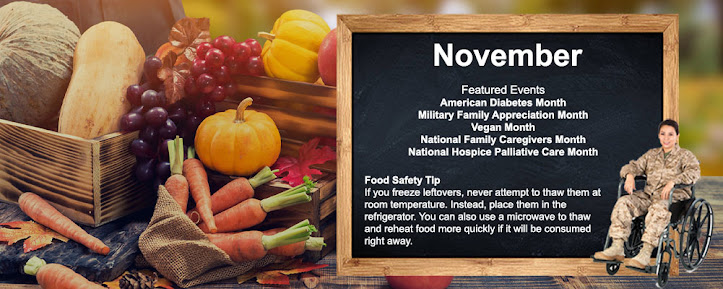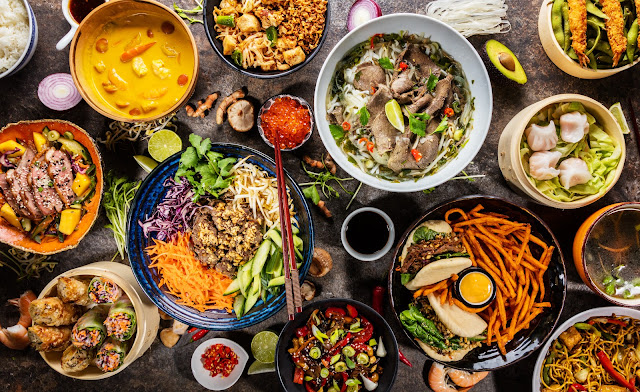Men's Health Month
Atlantic, Caribbean, & Gulf Hurricane Season (6/1-11/30)
Eastern Pacific Hurricane Season (5/15–11/30)
National Aphasia Awareness Month
Alzheimer's and Brain Awareness Month
Migraine and Headache Awareness Month
Myasthenia Gravis
Awareness Month
Fireworks Safety Month (6/1-7/4)
National Safety Month
Caribbean-American
Heritage Month
Great Outdoors Month
Adopt-a-Shelter-Cat Month
National
Pet Preparedness Month
National
Oceans Month
National Rivers Month
June
Dairy Month
Dairy Alternative Month
National Candy Month
National Fresh Fruit and Vegetables Month
National Frozen Yogurt Month
California Avocado Month
Georgia
Blueberry Month
National Iced Tea Month
National Mango Month
National Papaya Month
National Soul
Food Month
Sorghum Month
National Steakhouse Month
Turkey Lovers Month
Sports America Kids Month
Potty Training Awareness Month
National Camping Month
Weekly Events
1-30 National Lemonade Days
1-8 National Fishing and Boating Week
9-15 Men's Health Week
16-22 Learning Disabilities Week
22-28 Lightning Safety Week
24-30 National Mosquito Control Awareness Week
1
Kentucky 15th State;
Tennessee 16th State; National Olive Day; National Hazelnut Cake Day; National
Heimlich Maneuver Day; World Milk Day; Global Day of Parents; National Cancer
Survivors Day
2
MyPlate Anniversary;
National Rotisserie Chicken Day; National Rocky Road Day
3
National Egg Day;
National Chocolate Macaroon Day; World Bicycle Day
4
National Cheese Day;
National Cognac Day
5
UN World Environment
Day; National Veggie Burger Day; National Gingerbread Day
6
National Applesauce
Cake Day; National Drive-In Movie Day; National Gardening Exercise Day;
Horseradish Day
7
Chocolate Ice Cream
Day; World Food Safety Day
8
World Ocean Day;
National Best Friends Day; National Jelly-Filled Doughnut Day; National Get
Outdoors Day
9
Donald Duck Debut;
National Strawberry Rhubarb Pie Day
10
National Black Cow
Day; National Herbs and Spices Day; National Iced Tea Day; National Egg Roll Day
11
Corn on the Cob Day;
National Making Life Beautiful Day; National German Chocolate Cake Day
12
National Peanut Butter
Cookie Day; International Falafel Day
13
Kitchen Klutzes of
America Day; National Weed Your Garden Day
14
(World) Blood Donor
Day; Flag Day; Army Birthday; National Bourbon Day; National Strawberry
Shortcake Day; Cucumber Day; Family Fitness and Health Day
15
Nature Photography
Day; Arkansas 25th State; National Lobster Day; National Smile Power Day; Prune
Day; Father's Day; National Turkey Lovers’ Day
16
National Fudge Day;
Cracker Jack Day
17
National Eat Your
Vegetables Day; National Apple Strudel Day; National Cherry Tart Day; UN
World Day to Combat Desertification & Drought
18
Intl Picnic Day; Intl
Sushi Day; Sustainable Gastronomy Day
19
World Sickle Cell Day;
National Martini Day; National Garfield the Cat Day
20
National Ice Cream
Soda Day, National Vanilla Milkshake Day; West Virginia, 35th State; UN World
Refugee Day
21
Summer Solstice;
Peaches & Cream Day; New Hampshire 9th state; International Day of Yoga
22
National Onion Rings
Day; National Chocolate Éclair Day; World Rainforest Day
23
Public Service Day;
National Pink Day; National Hydration Day; National Pecan Sandies Day
24
Celebration of the
Senses; National Pralines Day
25
Strawberry Parfait
Day; National Catfish Day; National Parchment Cooking Day
26
National Chocolate
Pudding Day; International Day against Drug Abuse and Illicit Trafficking; Great
American Backyard Campout; National Coconut Day
27
National HIV Testing
Day; National Orange Blossom Day; National PTSD Awareness Day; National Onion
Day; National Ice Cream Cake Day; Intl Pineapple Day; National Food Truck Day
28 National Tapioca Day;
National Columnists' Day
29
National Almond
Buttercrunch Day; National Camera Day; National Waffle Iron Day
30
Jake's
Birthday; Social Media Day; National Meteor Watch Day; California Avocado Day;
National Bomb Pop Day
|
|
Months |
|

















































